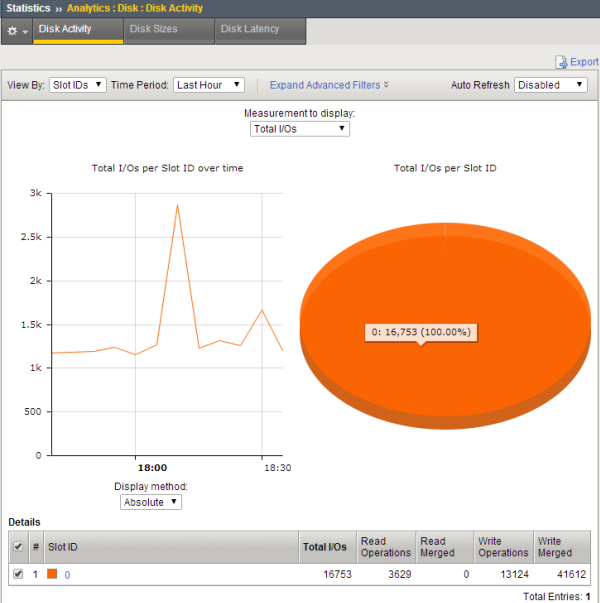Applies To:
Show Versions
BIG-IP AAM
- 11.6.5, 11.6.4, 11.6.3, 11.6.2, 11.6.1
BIG-IP APM
- 11.6.5, 11.6.4, 11.6.3, 11.6.2, 11.6.1
BIG-IP GTM
- 11.6.5, 11.6.4, 11.6.3, 11.6.2, 11.6.1
BIG-IP Analytics
- 11.6.5, 11.6.4, 11.6.3, 11.6.2, 11.6.1
BIG-IP Link Controller
- 11.6.5, 11.6.4, 11.6.3, 11.6.2, 11.6.1
BIG-IP LTM
- 11.6.5, 11.6.4, 11.6.3, 11.6.2, 11.6.1
BIG-IP PEM
- 11.6.5, 11.6.4, 11.6.3, 11.6.2, 11.6.1
BIG-IP AFM
- 11.6.5, 11.6.4, 11.6.3, 11.6.2, 11.6.1
BIG-IP ASM
- 11.6.5, 11.6.4, 11.6.3, 11.6.2, 11.6.1
Overview: Viewing system level statistics
- Internet Protocol (IP) packets, errors, and fragments
- Virtual server traffic details, TCP traffic, and UDP traffic
- CPU usage
- Memory statistics for TMM, other processes, system RAM, and swap space
- Disk activity, sizes, and latency
You can view the historical statistics for different periods of time. On systems with multiple slots, you can view the statistics for each slot. You can also export the information in any of the reports to PDF or comma-separated value (CSV) format, and save the reports or email them.
Viewing CPU, disk, and memory statistics
You can view CPU, disk, and memory statistics for the BIG-IP system to help with system troubleshooting.
Sample CPU statistics
This figure shows a sample CPU statistics report showing the percentage of CPU usage per CPU for the past week. This BIG-IP system has 10 CPUs, all in use.
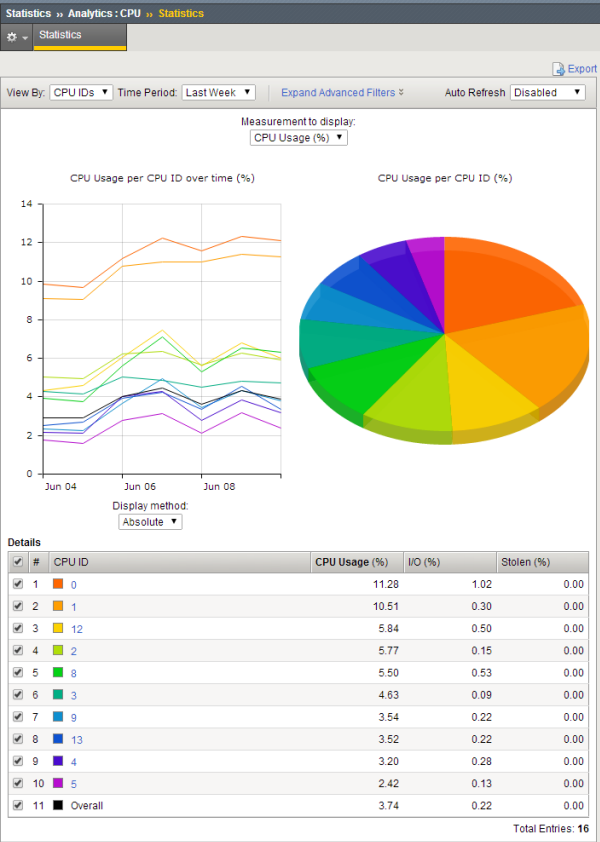 Sample CPU statistics
Sample CPU statistics
Sample system memory statistics
This figure shows a sample chart showing system RAM memory in use for the past day. This system has only one slot. On June 10 at 8:00 AM, average RAM went from 0 to 7.817 GB, probably when the system was started or when we sent some test traffic through the system.
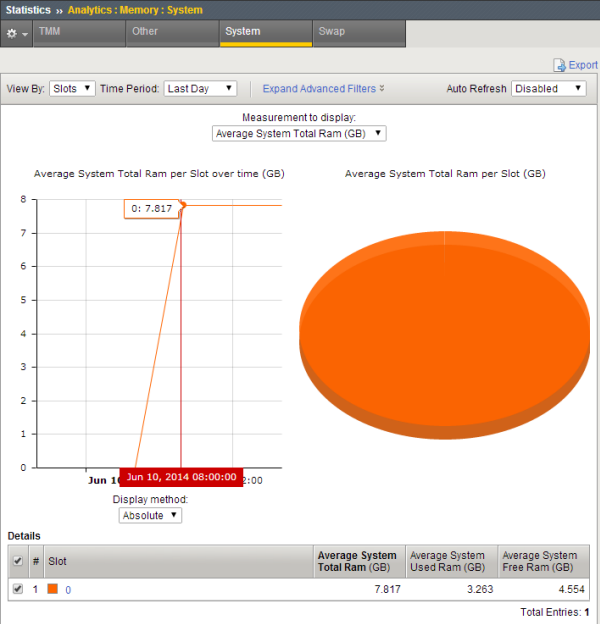 Sample system memory chart
Sample system memory chart
You can see other memory statistics by clicking TMM, Other, or Swap on the menu bar.
Viewing network statistics
You can view network statistics for the BIG-IP system to help with system troubleshooting and understanding peak load times. Statistics are available at both the Internet Protocol (IP) and virtual server level.
Sample IP Packets report
This figure shows a sample IP Packets report showing the number of packets received in both IPv4 and IPv6 formats during the past day. Most of the traffic is in IPv4.
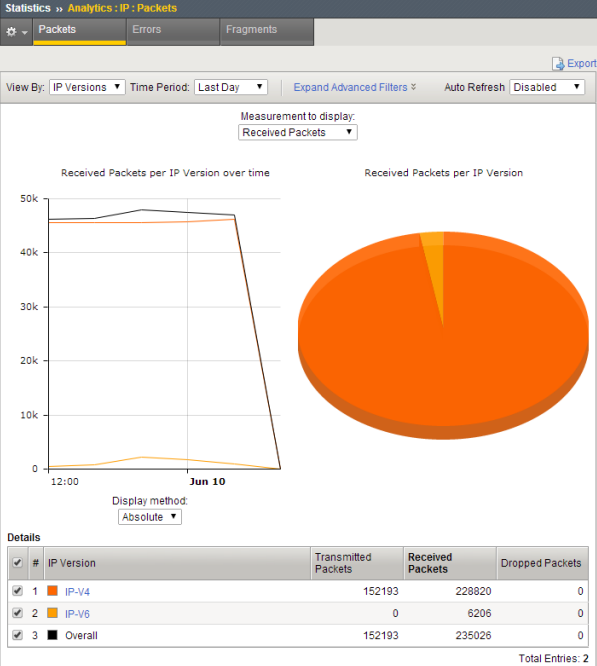 Sample IP Packets report
Sample IP Packets report
Sample Virtual Servers report
This figure shows a sample Virtual Servers report showing the number of client connections per virtual server. All of the traffic is on two of the virtual servers, vip_59 and vip_60. By placing the cursor at the highest point, the screen shows details of the number of overall connections, the virtual server affected, and the time. This way you can monitor peak usage times.
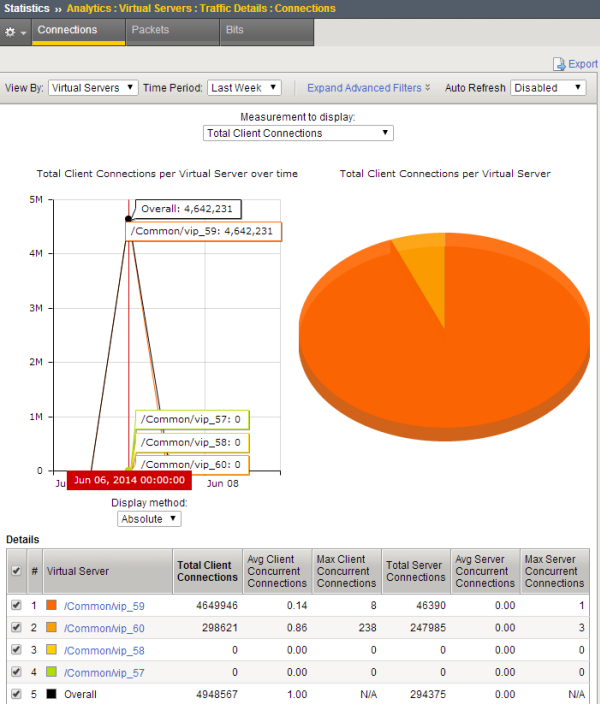 Sample Virtual Servers Traffic report
Sample Virtual Servers Traffic report

